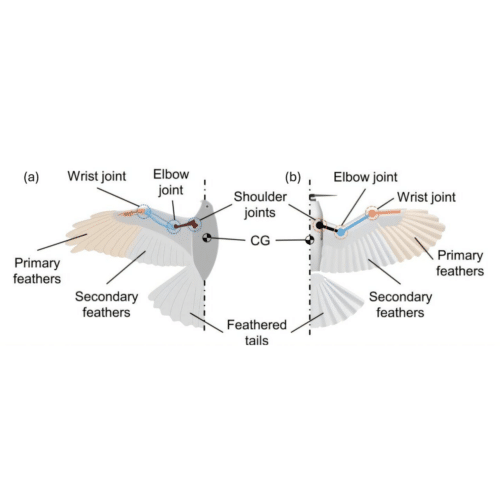EPFL researchers develop a drone, achieving sharp banking using only tail movements and proving to be promising for advanced drone design.

Engineers at École Polytechnique Fédérale de Lausanne (EPFL), Switzerland have created a hawk-inspired drone capable of banking manoeuvres solely by twisting its tail. The innovation by Hoang-Vu Phan, postdoctoral researcher, EPFL and Dario Floreano, roboticist and director, laboratory of intelligent systems (LIS), EPFL sheds light on raptor flight dynamics and offers new avenues for drone technology.
The researchers drew inspiration from observations of raptors, which bank while soaring without moving their wings. Instead of using ailerons, like traditional aircraft, these birds rely entirely on tail manipulation. To replicate this, the team designed a lightweight mechanical raptor, named ‘LisRaptor’, with anatomically accurate wings and tail covered in foam feathers.
Targeting applications in fields like aerial surveillance, environmental monitoring, and search-and-rescue operations, this innovation holds promise for industries needing precise, agile drones. Its ability to execute smooth, sharp turns can also benefit researchers studying natural flight dynamics and engineers exploring biomimetic designs for aerospace technologies.
The drone’s design emulated hawks’ skeletal structure, including movable joints resembling bird elbows and wrists. Held aloft in a controlled wind tunnel by a rod, the artificial bird underwent rigorous tests to mimic real raptor flight. The researchers incorporated insights from hawk flight videos, particularly their technique of twisting tails to adjust airflow and achieve banking.
During testing, the drone successfully executed banking maneuvers without wing involvement. “All it took was a certain twisting of the tail,” the researchers noted. The tail’s proximity to the wings enabled asymmetric airflow, generating lift on one side and allowing smooth turns while avoiding stalls.
The findings demonstrate how raptors’ unique mechanics can inspire drone design. The researchers believe their work not only deepens understanding of avian flight but could also lead to innovative drones capable of performing sharper and more efficient turns. By studying natural adaptations and translating them into robotics, this research underscores the potential for biomimicry in advancing aeronautical engineering.







